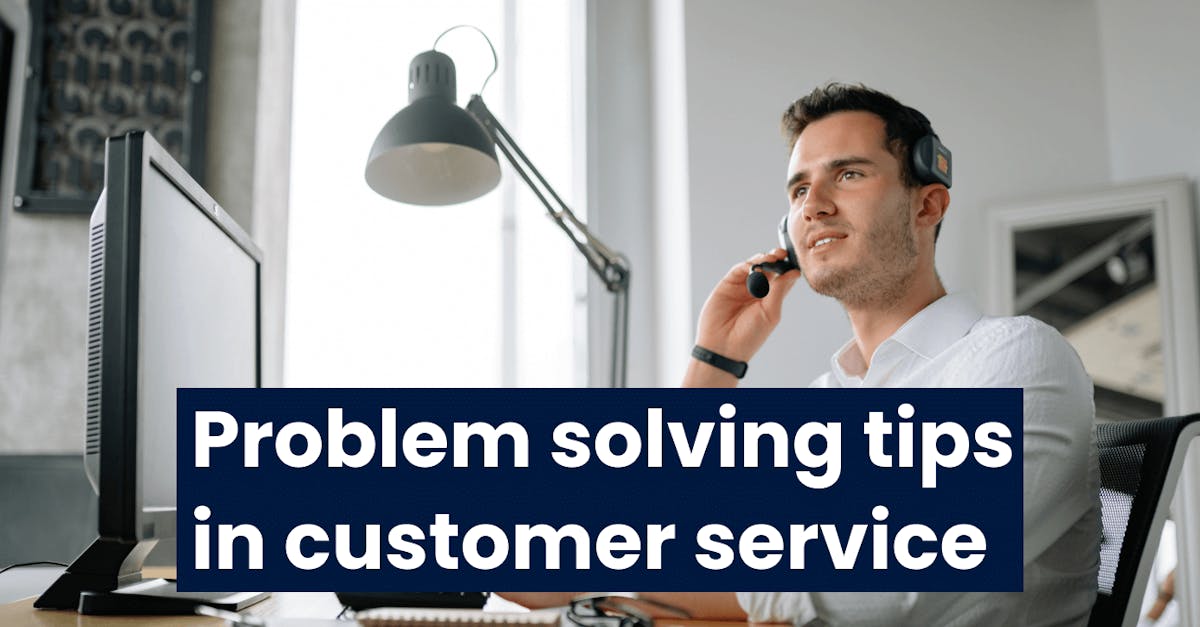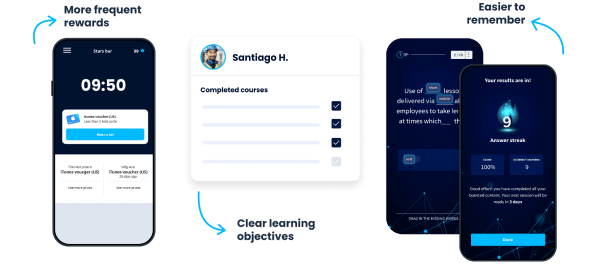10 Tips and Techniques for Customer Service Problem-Solving

In the customer service world, challenges arise when you least expect them. Whether you're a seasoned professional or just starting, mastering the art of problem-solving is essential.
In this article, we’ll share with you 10 simple yet effective tips and techniques that will empower your team to navigate customer service issues like a pro.
From active listening to setting realistic expectations and offering solutions, these strategies will benefit your business by enhancing your team’s problem-solving skills and boosting customer satisfaction.
Why are problem-solving skills important in customer service?
Problem-solving skills are crucial in customer service because they turn frustrating situations into bright opportunities. When you effectively identify and address customer issues, you also show that you genuinely care about their satisfaction.
These skills build trust, improve customer loyalty, and lead to positive word-of-mouth recommendations. Moreover, they help your team handle challenges efficiently, reducing stress and improving overall job satisfaction.
In short, mastering problem-solving in customer service is the key to creating happy customers and a thriving, customer-centric business.
Customer Service Problem-Solving # 1 - Active Listening
Active listening is a vital technique in customer service problem-solving. It involves fully focusing on what the customer is saying, not just waiting for your turn to speak.

To practice it effectively, encourage your team to maintain eye contact, nod in acknowledgment, and use phrases like "I understand" to show empathy. Let them practice how to avoid interrupting and give customers the space to express themselves fully.
By truly hearing your customers’ concerns and needs, your team can respond more precisely and find solutions that leave customers feeling valued and satisfied. This successfully turns potentially challenging situations into positive experiences.
Edapp can empower your customer service team's problem-solving skills by offering interactive and customized training courses. These problem solving training courses include EdApp’s Problem Solver course. There’s also a course on Dealing with Difficult Customers.

Through scenario-based simulations, your team members can practice resolving real-life customer issues in a safe learning environment. Edapp's reporting and analytics features allow you to monitor individual progress, identify areas for improvement, and provide targeted feedback.

With the flexibility of mobile learning, your team can also access training anytime, anywhere, making it convenient to sharpen their problem-solving abilities. Plus, Edapp's engaging and adaptive content makes sure that your team stays motivated and develops the critical skills needed to excel in customer service problem-solving.
Sign up to EdApp for free to unlock your customer service team’s best potential.
Customer Service Problem-Solving # 2 - Stay Calm and Patient
Staying calm and patient is a superpower in problem-solving. When your team keeps their cool even in tough situations, it sends a reassuring message to the customer that they’re competent and there to help.

Some tips you can give them are to take deep breaths, to remember it's not personal, and to not rush through the conversation. Pausing to collect their thoughts can also lead to better solutions and prevent the situation from escalating.
With this customer service problem-solving skill, your team gains the upper hand in resolving issues effectively, creating happier customers, and making their jobs less stressful in the process.
Customer Service Problem-Solving # 3 - Apologize Sincerely
Apologizing sincerely is a golden technique in customer service. When your team members genuinely say, "I'm sorry," they show empathy and take responsibility for any inconvenience the customer has faced, regardless of fault.

This simple act of acknowledging their frustration can go a long way in diffusing tension and starting the path toward resolution when it comes to customer service problem solving. A sincere apology demonstrates that your customer service team cares about their experience and is committed to making it right.
So, don't let your team underestimate the power of a heartfelt "I'm sorry" in turning a customer's problem into an opportunity to leave them feeling valued and satisfied.
Customer Service Problem-Solving # 4 - Take Ownership
Taking ownership is a remarkable technique when dealing with customer problems. When your team members accept responsibility for resolving an issue, they send a clear message to the customer that their concerns matter to your business.

It doesn't matter if your product or service caused the problem. By taking ownership, your team demonstrates a commitment to finding a solution and ensuring their satisfaction. This step builds trust and confidence in your customers, showing that your team is there to support them every step of the way.
Encourage your team to say, "I'll take care of this for you." It's a powerful way to transform challenges into opportunities in exceptional customer service problem solving.
Customer Service Problem-Solving # 5 - Set Realistic Expectations
Setting realistic expectations is an important step for customer service problem solving. When you communicate clear timelines, you're being honest and transparent with what the customer can expect.

This helps manage their expectations and prevents disappointment down the road. Under-promising and over-delivering is a technique your team can use to make sure that they have the time and resources needed to meet or exceed the commitments they’ve made.
This technique not only prevents misunderstandings but also creates a positive experience by showing that your team is dependable and trustworthy. It ultimately makes customers happier and more satisfied with the service they receive.
Customer Service Problem-Solving # 6 - Collaborate with Colleagues
Letting your team members collaborate with their colleagues for problem-solving is like having a superhero team for customer service in your organization. Sometimes, challenges are complex, and it's perfectly okay to call in reinforcements.

They can also involve other team members or departments when needed, ensuring that they have all the expertise and resources at their disposal. Effective internal communication is the key here; so make sure that everyone is on the same page.
This customer service problem solving example helps find more comprehensive solutions and demonstrates a unified commitment to customer satisfaction. So, remind your team that they’re not alone in this mission–collaborate, conquer, and make your customers' day better together.
Customer Service Problem-Solving # 7 - Offer Solutions
Offering solutions is not just about acknowledging the issue; it's about actively seeking ways to fix it. Presenting practical solutions to the customer's problem shows that your team is dedicated to making things right and that customer satisfaction is their top priority.

So when faced with examples of problem-solving scenarios, have your team discuss the options, outlining the pros and cons if necessary, to help your customers make an informed decision.
Offering solutions not only resolves the immediate problem but also fosters trust and loyalty, leaving customers feeling heard, valued, and confident in your team’s ability to provide exceptional service.
Customer Service Problem-Solving # 8 - Follow-Up
Once the issue is resolved, your customer service team shouldn’t leave your customers hanging. They should take the extra step to check in with them.

Whether it's a quick email or a phone call, asking if everything is going well shows that your team genuinely cares about their satisfaction even after the problem is resolved. It's a fantastic way to ensure their needs are fully met and to gather valuable feedback for continuous improvement.
Following up not only leaves a lasting positive impression but also transforms a simple resolution into a memorable and delightful customer experience. So, remind your team to circle back and make sure that your customers are smiling long after the issue is history.
Customer Service Problem-Solving # 9 - Document the Interaction
When your team members keep detailed records of customer issues and the steps taken to resolve them, they’re creating a valuable resource for your customer service team.

These records offer a clear picture of past challenges and solutions, making it easier to spot trends and identify areas for improvement. Plus, they guarantee consistency in your service by allowing any team member to pick up where you left off, providing a seamless customer experience.
Think of documentation as your team’s secret weapon for conquering future customer service adventures, helping them navigate problems with confidence and precision.
Customer Service Problem-Solving # 10 - Learn from Each Case
After resolving an issue, let your team take a moment to reflect on what went well and what could be improved. Have them analyze customer feedback and common issues to identify patterns and trends.

By turning each case into a learning opportunity, your team can continually refine their problem-solving skills and fine-tune your business’s customer service approach.
It's the key to growth, making sure that you and your team are always ready to tackle new challenges with even greater expertise. This ultimately creates happier customers.
Author
Donna Dane
Donna is an elearning content writer for EdApp, a mobile-based microlearning platform designed for today's digital training needs. When she's not writing web articles, she writes lines of code or songs or anything food-related.
